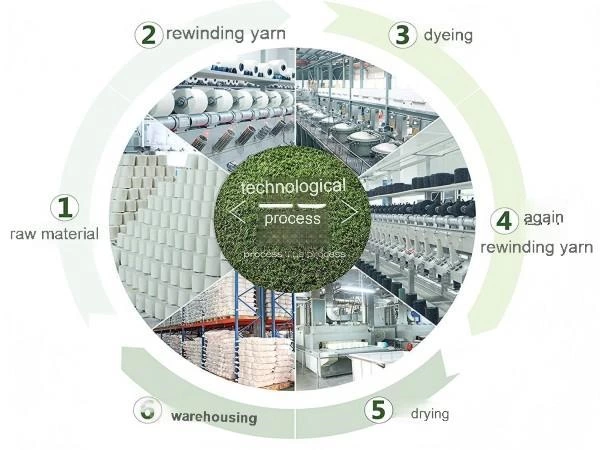Production Process Flow of Yarn Company

- Raw Material Preparation
The raw materials for yarn production are diverse, including cotton, wool, chemical fibers, etc. Taking cotton as an example, the first step in raw material preparation is cotton cleaning. The cotton cleaning machine is the first process in the yarn mill production line. It removes impurities such as seed cotton and leaf cotton from the cotton through high-speed rotating beaters and a suction device, improving the purity of the cotton. This step provides high-quality raw material assurance for subsequent processes.
- Opening, Cleaning, and Carding
After cotton cleaning, the cotton enters the opening and cleaning process. This step further opens up the cotton, separates the fibers, and mixes them uniformly, while removing more impurities. Subsequently, the cotton enters the carding machine. The carding machine performs fine carding and transfer of the cotton through the interaction of components such as cylinders, doffers, and card wires, aligning the cotton fibers in parallel, removing short fibers and impurities, and improving the uniformity and quality of the cotton sliver.
- Drawing and Roving
The cotton sliver output by the carding machine is further processed by the drawing machine. The drawing machine combines multiple cotton slivers into a thicker one, while drafting and blending the sliver to improve its uniformity and quality. Drawing is one of the very important processes in a yarn mill, which is of great significance for improving the quality and production of yarn.
Next, the cotton sliver output by the drawing machine enters the roving machine. The roving machine processes the cotton sliver into roving with a certain twist and strength through actions such as drafting, twisting, and winding. Roving is the preceding process of spinning, and its quality directly affects the quality and production of spun yarn.
- Spinning and Winding
Spinning is the final key process in yarn production. The spinning machine processes the roving into spun yarn that meets the requirements through drafting, twisting, and winding by high-speed rotating spindles and rings. The quality and production of spun yarn directly affect the economic benefits and market competitiveness of the yarn mill.
After spinning, the yarn enters the winder. The main task of the winder is to wind the spun yarn into bobbins for easy transportation and storage. At the same time, the winder can also remove defects and impurities on the yarn, improving the overall quality of the yarn.
- Post-processing and Quality Inspection
The yarn may need to undergo post-processing such as singeing and waxing after winding to improve the appearance quality and intrinsic performance of the product. In addition, the yarn needs to undergo strict quality inspection to ensure that it meets relevant standards and customer requirements. Quality inspection usually includes appearance inspection, physical index testing, etc., to ensure the stable and reliable quality of the yarn.
- Packaging and Sales
The yarn that has passed the quality inspection will be packaged and put into storage for sales. The yarn company will ship the yarn to customers in various locations based on customer needs and order situations. At the same time, the company will continue to expand the market and enhance its brand influence to meet the needs of more customers.
Production Flow Chart



